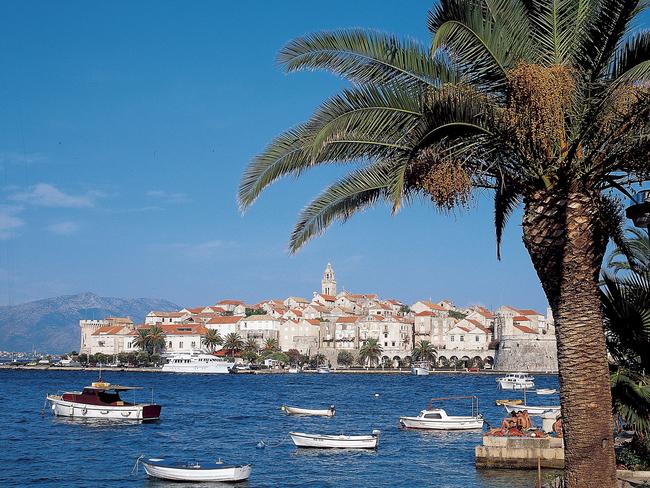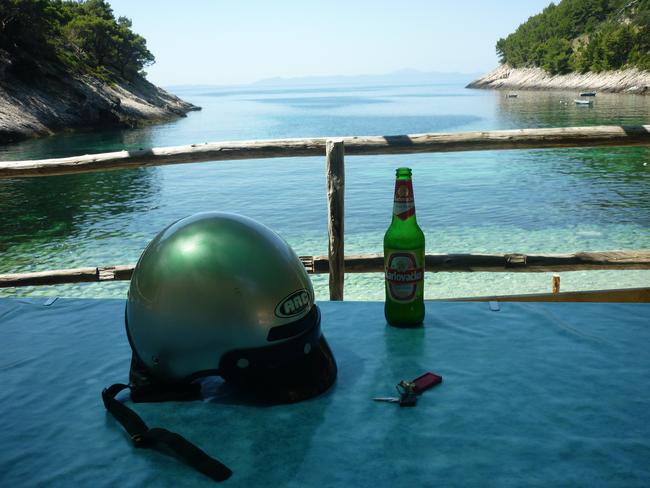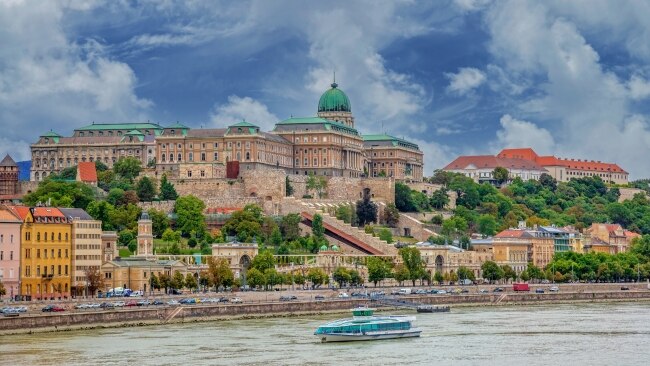Escape the crowds at Račišće on Korcula Island in Croatia
A FAMILY connection leads Greg Stolz to an idyllic island off the Dalmatian coast.

Europe
Don't miss out on the headlines from Europe. Followed categories will be added to My News.
SOUTHERN Europe is teeming with tourists. The Med is mayhem, the Riviera rife with crowds. Trains, planes, hotels, restaurants and monuments are packed as people from all over the world flock to soak up the sun in the south of France, Italy or the Greek Islands.
Then there are places like Racisce, part of Korcula, one of 1185 islands in Croatia and reputedly the birthplace of Marco Polo.
We not so much stumbled on it as pinpointed it on a map, Racisce being the birthplace of my sister-in-law, who had extolled its beauty and charm before my wife, son and I set off on a six-week trip of a lifetime to Europe.
I say trip of a lifetime because my wife is petrified of planes and it took years of coaxing and courage-mustering to get her in the air. But Europe was beckoning, and determination (and a few strong sleeping pills) eventually overcame fear.
Rome is beyond hectic and after two nights in a fairly dodgy hotel, we happily board the train to Florence.

We have booked six nights in a villa named Podere Le Cave, high in the Tuscan hills overlooking Florence, and are not disappointed. The lovely old stone villa (actually three villas, all spacious, comfortable and self-contained) is on a working olive farm run by a nice couple, Marijella and Dante, and has fine views from the manicured grounds, which include an inground pool.
After a delightful week in Tuscany – strolling the hills and cobbled lanes, sightseeing in Florence, lunching in the village of Impruneta (five minutes by bus) and a moped day tour of the wineries – we take a train to Vernazza on the Cinque Terre.
Vernazza is every bit as picturesque as the guide books promise, with its single cobblestone street lined with brightly coloured 11th-century buildings leading down to a harbour, where the local fishermen tend their boats as the tourists dine alfresco or swim in the protected bay.
Steep, narrow stone stairs and alleyways between rows of shops and eateries lead to the old fort, amazing rooftop restaurants, hidden apartments and the Cinque Terre trail.
We hike most of the 11km trail, which links the five villages of the Cinque Terre – Vernazza, Monterosso, Corniglia, Manarola and Riomaggiore. But we walk it in stages over a few days, as the ultra-steep terrain – and as many as 2000 stairs in a stage – will test the toughest mountain goat. Train stations in each village make the return journey easier on the legs, though the trains can be more crammed than the Mumbai Express.
From Vernazza, we travel to Ancona and on to Croatia on the overnight ferry. Sunrise reveals the Dalmatian Coast in all its glory: impossibly blue water, lush emerald islands and the stark limestone hills of the Peljesac peninsula.

After a brief stopover in Split, the ferry takes us to Korcula – the sixth-largest island in the Adriatic and the second-most populous in Croatia. Despite its size, Korcula is not nearly as hectic as other Croatian destinations such as Dubrovnik, Split and Hvar.
But its popularity is growing, with some likening the fortified Old Town, established in the 13th century, to a mini-Dubrovnik without the crowds. Korcula Town is laid out herringbone-style, with narrow, cobbled lane ways laden with shops and restaurants (including a turret bar accessible only by ladder).
The Cathedral of St Mark, built between 1301 and 1806, dominates the main square and affords spectacular views from its bell tower.
We spend two nights in an 18th-century penthouse in the heart of the Old Town and another five in an “apartman” – or “so be” as they also known in Croatia – just out of town overlooking the strait between Korcula and Peljesact.
Our days are spent in idle bliss swimming in the Adriatic, windsurfing and kayaking, lunching on our balcony (with locally made wine gifted by one of our hosts) or strolling the streets of Korcula Town.
After our town experience, a bus takes us 12km up the island to Racisce. Our first glimpse is of a small village (population 477) on a blue bay with bobbing fishing dinghies. The main landmark is the bell tower of the newer of Racisce’s two churches (the older one, St Vlaho, was built in 1682 but is now closed). The village also has two restaurants, a tavern and a small supermarket.

Tourists are not common in Racisce and the locals, few of whom speak English, can be a little stand-offish toward strangers. But when word gets out that we have family connections to the village, the daily greetings of “bok” (hello) become warmer and friendlier.
Our days in Racisce start with an invigorating 500m swim from the pontoon at the bottom of the street across to the limestone sea wall on the other side of the harbour.
Then it’s over to the Cin Cin Cafe for morning coffee followed by breakfast of fresh bread, cheese, salami and tomato on our balcony.
Days in Racisce go by languidly, swimming and snorkelling; sunbathing on the white-stone shore; walking to tucked-away bays and beaches; devouring Dalmatian cuisine on the waterfront; and necking a few drinks with the locals while watching a bocce game.
A two-night side trip to Hvar, Croatia’s answer to Ibiza, only has us longing for Racisce again and we gladly leave the party playground to return to “our” little village.
GO2 CROATIA
Getting there
Korcula is accessible via passenger ferry from Split and Dubrovnik, with regular services in peak season.
Many airlines fly to Split from the European capitals, while there are also overnight ferries to Croatia from Ancona and Bari in Italy.
See korculainfo.com and croatiaferries.com
--
“Like” Escape.com.au on Facebook
Follow @Escape_team on Twitter



